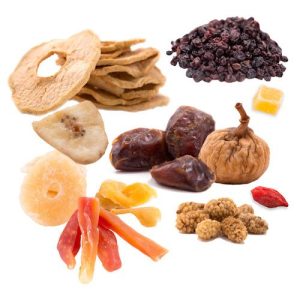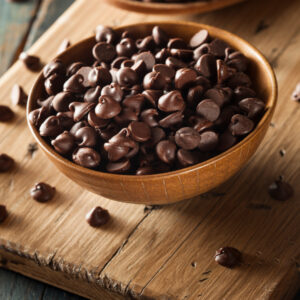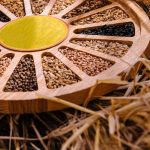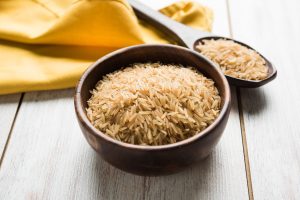In the world of nutrition, understanding how foods affect our bodies is crucial for maintaining health and well-being. One important concept that has gained popularity in recent years is the Glycemic Index (GI). Whether you’re managing diabetes, looking to lose weight, or simply want to make better dietary choices, grasping the nuances of the Glycemic Index can significantly impact your health.
This comprehensive guide will delve into what the Glycemic Index is, how it works, its benefits, classifications of foods, and practical tips for integrating GI into your diet.
What is the Glycemic Index?

The Glycemic Index is a ranking system that classifies foods based on how they affect blood glucose levels. Foods are assigned a score on a scale of 0 to 100, with glucose itself having a value of 100. The GI measures how quickly and how much a food raises blood sugar compared to glucose.
The Science Behind Glycemic Index
When we eat, carbohydrates are broken down into glucose, which enters the bloodstream. The rate at which this happens varies among different foods. High GI foods are quickly digested and absorbed, leading to a rapid spike in blood sugar. Conversely, low GI foods are digested more slowly, causing a gradual rise in blood sugar levels. This distinction is crucial for understanding how different foods can affect energy levels, hunger, and overall health.
Why is the Glycemic Index Important?
Understanding the Glycemic Index can provide numerous health benefits:
 1. Blood Sugar Control
1. Blood Sugar Control
For individuals with diabetes or insulin resistance, managing blood sugar levels is critical. Consuming low GI foods can help prevent the spikes and crashes that can lead to complications. Research has shown that diets rich in low GI foods can improve glycemic control and reduce the need for insulin in some diabetic patients.
 2. Weight Management
2. Weight Management
Low GI foods tend to be more satiating, meaning they keep you feeling full longer. This can help control hunger and reduce overall calorie intake. Studies have indicated that individuals who follow a low GI diet often experience greater weight loss and improved body composition compared to those consuming high GI diets.
 3. Heart Health
3. Heart Health
Diets rich in low GI foods are linked to lower cholesterol levels and improved heart health. High GI foods can contribute to increased triglycerides and a higher risk of cardiovascular diseases. By focusing on low GI options, individuals can support better heart health and reduce their risk of heart disease.
 4. Sustained Energy Levels
4. Sustained Energy Levels
Consuming low GI foods can lead to more stable energy levels throughout the day. High GI foods often result in rapid spikes in blood sugar, followed by crashes that can leave you feeling fatigued. By choosing low GI foods, you can maintain more consistent energy levels, enhancing your overall productivity and well-being.
 5. Reduced Risk of Chronic Diseases
5. Reduced Risk of Chronic Diseases
A diet high in low GI foods is associated with a reduced risk of developing chronic diseases such as type 2 diabetes, heart disease, and certain cancers. By prioritizing these foods, you can take proactive steps to protect your long-term health.
Factors Affecting the Glycemic Index
Several factors can influence the Glycemic Index of a food, making it essential to consider the context in which you consume it:
1. Ripeness
The ripeness of fruits can significantly affect their GI. For example, a ripe banana has a higher GI than an unripe one. As fruits ripen, their starches convert to sugars, increasing their glycemic impact.
2. Cooking Method
How a food is prepared can alter its GI. For instance, boiling potatoes results in a lower GI compared to baking or mashing them. Cooking methods that break down the cell walls of food tend to increase the GI.
3. Food Composition
The overall composition of a meal influences its GI. Foods rich in fat and protein generally have a lower GI than carbohydrate-rich foods. Adding protein or healthy fats to a meal can help slow the absorption of carbohydrates, leading to a more gradual increase in blood sugar.
4. Fiber Content
High-fiber foods tend to have a lower GI because fiber slows digestion and absorption. Incorporating more fiber into your diet can improve glycemic control and promote overall health.
5. Food Form
The form in which food is consumed also matters. Whole fruits, for example, have a lower GI compared to fruit juices. This is due to the fiber content in whole fruits, which slows down the absorption of sugars.
 Examples of Foods and Their Glycemic Index
Examples of Foods and Their Glycemic Index
Here’s a breakdown of common foods and their GI values, categorized for easy reference:
Low GI Foods (0-55)
- Fruits:
- Whole Grains:
- Rolled Oats (55)
- Wild Whole Black Rice (45)
Medium GI Foods (56-69)
- Fruits:
How to Incorporate the Glycemic Index into Your Diet
Incorporating the GI into your diet is not about completely avoiding high GI foods; rather, it’s about making informed choices. Here are some practical tips to help you integrate GI into your daily eating habits:
1. Choose Whole Foods
Focus on whole, unprocessed foods that generally have a lower GI. These foods are not only better for blood sugar control but also provide essential nutrients and fiber that contribute to overall health.
2. Pair Foods Wisely
Combine high GI foods with low GI options to lower the overall glycemic impact of your meal. For example, serve white rice with beans or vegetables to create a balanced dish that mitigates blood sugar spikes.
3. Opt for Whole Grains
When selecting grains, choose whole grains over refined options. For example, whole grain bread, brown rice, and quinoa offer lower GI values and higher fiber content compared to their white or processed counterparts.
4. Experiment with Cooking Methods
Alter your cooking methods to maintain lower GI levels. Instead of frying or mashing, consider steaming or boiling vegetables and grains to preserve their nutrient density and lower their GI.
5. Focus on Fiber
Incorporate more high-fiber foods into your diet, such as legumes, whole grains, and vegetables. Fiber not only aids in digestion but also helps stabilize blood sugar levels.
6. Monitor Portion Sizes
Even low GI foods can impact blood sugar if consumed in large quantities. Pay attention to portion sizes and aim for balanced meals that include a variety of food groups.
7. Stay Hydrated
Drink plenty of water throughout the day. Staying hydrated can help regulate blood sugar levels and support overall metabolic health.
8. Listen to Your Body
Pay attention to how different foods make you feel. Some individuals may find that certain high GI foods affect their energy levels or mood. Adjust your diet accordingly based on your body’s responses.
Conclusion
The Glycemic Index is a powerful tool that can significantly impact your diet and overall health. By understanding how different foods affect blood sugar levels, you can make more informed choices that promote stability, energy, and well-being. Remember that the GI is just one aspect of nutrition; focusing on a balanced diet rich in whole foods, fiber, and nutrients is essential for long-term health.
By keeping the Glycemic Index in mind, you can take control of your dietary choices and enhance your health—one meal at a time. Embrace the power of informed eating, and you’ll be well on your way to a healthier, more vibrant life. Whether you’re managing a health condition or simply aiming for better well-being, integrating the GI into your lifestyle can be a game-changer. So take the first

 1. Blood Sugar Control
1. Blood Sugar Control 2. Weight Management
2. Weight Management 3. Heart Health
3. Heart Health 4. Sustained Energy Levels
4. Sustained Energy Levels 5. Reduced Risk of Chronic Diseases
5. Reduced Risk of Chronic Diseases Examples of Foods and Their Glycemic Index
Examples of Foods and Their Glycemic Index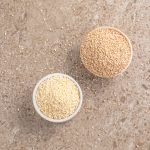



 What Are Antioxidants?
What Are Antioxidants?